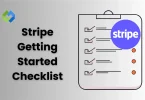In the European Union, Stripe offers many useful services. It supports payments in different currencies used across EU countries. Stripe also follows strict rules to keep payments safe and legal. Businesses in the EU can use Stripe to accept payments online, send money to their bank accounts, and manage their sales easily.
Table of Contents
Table of Contents
How Stripe Processes Payouts in the EU
When a customer makes a payment, Stripe first collects the money into your Stripe account balance. This money stays there until Stripe schedules a payout to your linked bank account. The payout is how Stripe sends your earned funds from its system to your actual bank.
In the European Union, Stripe uses local bank transfer systems like SEPA (Single Euro Payments Area) to send money. SEPA allows fast and secure transfers between banks in EU countries. Stripe prepares the payout and sends it through these banking networks. After that, your bank processes the incoming transfer and credits the amount to your account.
The whole payout process usually takes a few business days. However, the exact time can vary depending on your bank’s speed and local holidays. Stripe follows all EU financial rules to make sure your payouts are safe and compliant.
Typical Payout Timeframes for EU Businesses
Standard Payout Timeframe
For most businesses in the European Union, Stripe payouts usually take about 2 to 7 business days to reach their bank accounts. This time includes Stripe’s processing and the bank’s handling of the transfer. The exact timing depends on your bank and the country where your account is held.
First Payout vs. Subsequent Payouts
The first payout after setting up your Stripe account may take longer. This is because Stripe performs extra checks to verify your business and bank details. After this initial payout, later payouts generally arrive faster, often within 2 to 4 business days.
Impact of Weekends and Public Holidays
Weekends and public holidays can also affect payout times. Banks typically do not process transfers on these days, so payouts may be delayed until the next business day.
Steps to Set Up Stripe Payouts for EU Accounts
Create and Verify Your Stripe Account
First, sign up for a Stripe account using your business details. You will need to provide information like your company name, address, and contact details. Stripe will also ask you to verify your identity to meet EU regulations. This verification helps keep payments safe.
Add and Confirm Your Bank Account
Next, link your EU bank account to Stripe. You will need to enter your bank details, such as your IBAN (International Bank Account Number). Stripe may make a small test deposit to confirm that your bank account is active and correct.
Choose Your Payout Schedule
After linking your bank, select how often you want Stripe to send payouts. You can choose daily, weekly, or monthly payouts, depending on what fits your business needs.
Complete Any Additional Compliance Checks
Depending on your business type and location, Stripe may request extra information to comply with EU laws. Make sure to provide any requested documents promptly to avoid payout delays.
Currency and Bank Transfer Details in the EU
Stripe supports multiple currencies used across the European Union. This means businesses can accept and receive payments in euros (EUR) as well as other popular currencies. When you set up your Stripe account, you can choose which currencies to accept based on your customers and market.
For bank transfers, Stripe uses SEPA (Single Euro Payments Area) for payouts within the EU. SEPA allows fast and secure euro transfers between banks in member countries. To receive payouts through SEPA, you need to provide your IBAN (International Bank Account Number). This ensures your payments go directly to your bank account without extra fees or delays.
If your bank account uses a currency other than euros, Stripe may convert the payout currency. Currency conversion can add a small fee and may take additional time. It is important to check your bank’s policies and Stripe’s currency options to avoid surprises.
Delays and Common Issues with Stripe Payouts
Bank Processing Delays
Sometimes, Stripe payouts may take longer due to delays at the bank. Banks may slow down transfers during busy periods or perform additional internal checks. Weekends and public holidays also pause payout processing, causing extra wait time.
Incorrect or Outdated Bank Details
If your bank information, like your IBAN, is wrong or outdated, payouts can fail or be delayed. Always make sure your bank details are accurate and up to date in your Stripe account.
Payout Holds Due to Verification
Stripe may hold payouts if more verification is needed. This can happen if there is unusual activity on your account or if required documents are missing. Quickly providing any requested information helps avoid payout holds.
Tracking and Getting Support
You can track your payout status in the Stripe dashboard. If delays happen, contacting Stripe support can help resolve issues. Keeping your account details and documents current reduces payout problems.
Comparing Stripe Payout Times with Other Payment Processors
Stripe Payout Times in the EU
Stripe’s payout times generally range from 2 to 7 business days. This timeframe is reliable and works well for many businesses in the European Union.
PayPal Payout Times
PayPal often provides faster access to funds within its own system, sometimes instantly or within one business day. However, transferring money from PayPal to a bank account usually takes 1 to 3 business days.
Payoneer Payout Times
Payoneer payouts typically take 2 to 5 business days. It also offers prepaid cards and other withdrawal options that can provide quicker access to funds compared to standard bank transfers.
Conclusion
Stripe payout times in the European Union usually take 2 to 7 business days. The first payout may take longer due to account verification. After that, payouts are faster and more consistent. Weekends, holidays, and bank processing times can affect how quickly you receive your money.
Setting up your Stripe account properly and keeping your bank details updated helps avoid delays. Stripe uses trusted local systems like SEPA to make payouts smooth and secure.














